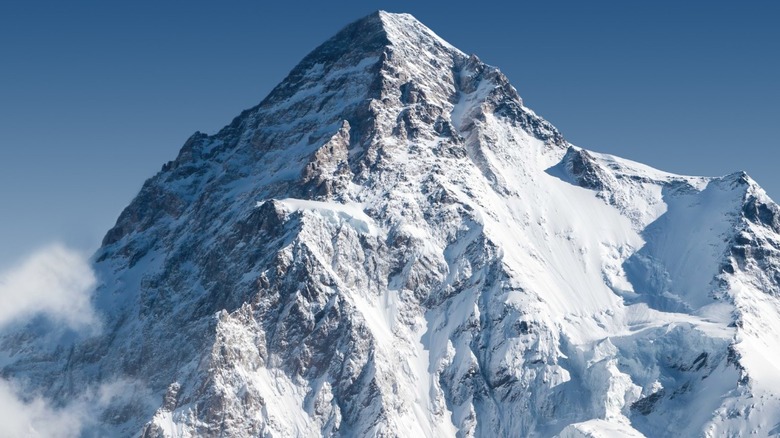This Is What Happens To Your Brain At Really High Altitudes
If you have ever visited a high-altitude city like Breckenridge, Colo., or Bogotá, Colombia, you may have felt tired, nauseous, and out of breath. Perhaps you had a pounding headache that wasn't from too much or too little coffee. These are common symptoms of altitude sickness, otherwise known as acute mountain sickness (via Centers for Disease Control and Prevention).
Altitude sickness commonly occurs at elevations of 8,000 feet or higher. According to National Health Service, most people acclimatize to an altitude of 8,000 feet in about two or three days. For those who need to treat altitude sickness, you can descend at least 1,600 feet or take medicine like acetazolamide to relieve symptoms. Left untreated, more serious forms of altitude illness can develop in the brain or lungs.
The effects of altitude on your body can be taxing, but the impact of extremely high altitudes can be worse. Altitudes above 26,000 feet are known by mountaineers as the "Death Zone" (via National Geographic). At such extreme heights, the body cannot properly acclimatize and begins to effectively shut down (via Medscape).
Journalist and mountaineer Jon Krakauer neatly summed up the reality of survival at high altitudes in the book "Into Thin Air" when he wrote, "...up in the Death Zone, survival is to no small degree a race against the clock."
Here's what happens to your brain at really high altitudes.
High altitude cerebral edema (HACE)
The higher you climb and the longer you remain exposed to extreme altitudes, the greater chance you have of developing swelling in the brain (via Outside).
High altitude cerebral edema (HACE) is thought to occur because of hypoxia: a lack of oxygen in your tissues (via American Journal of Neuroradiology). According to MedicalNewsToday, cerebral edemas form at high altitudes as the pressure in your blood vessels and hypoxia cause a build-up of fluid in the brain, leading to swelling. The results can compromise both your motor and mental abilities.
Beyond a headache, you may become disoriented, weak, and lose control of your body. According to the Cleveland Clinic, hallucination, memory loss, and psychotic behavior can also occur. In some cases, people with high altitude cerebral edema (HACE) will think that they are in good health and refuse treatment (via National Health Service).
Although high altitude cerebral edema (HACE) is considered the least common type of altitude illness, it is perhaps the quickest killer (via StatPearls). Left untreated for more than 24 hours, high altitude cerebral edema (HACE) can be lethal (via American Journal of Neuroradiology). Remember, when it comes to survival at high altitudes, time is of the essence.


